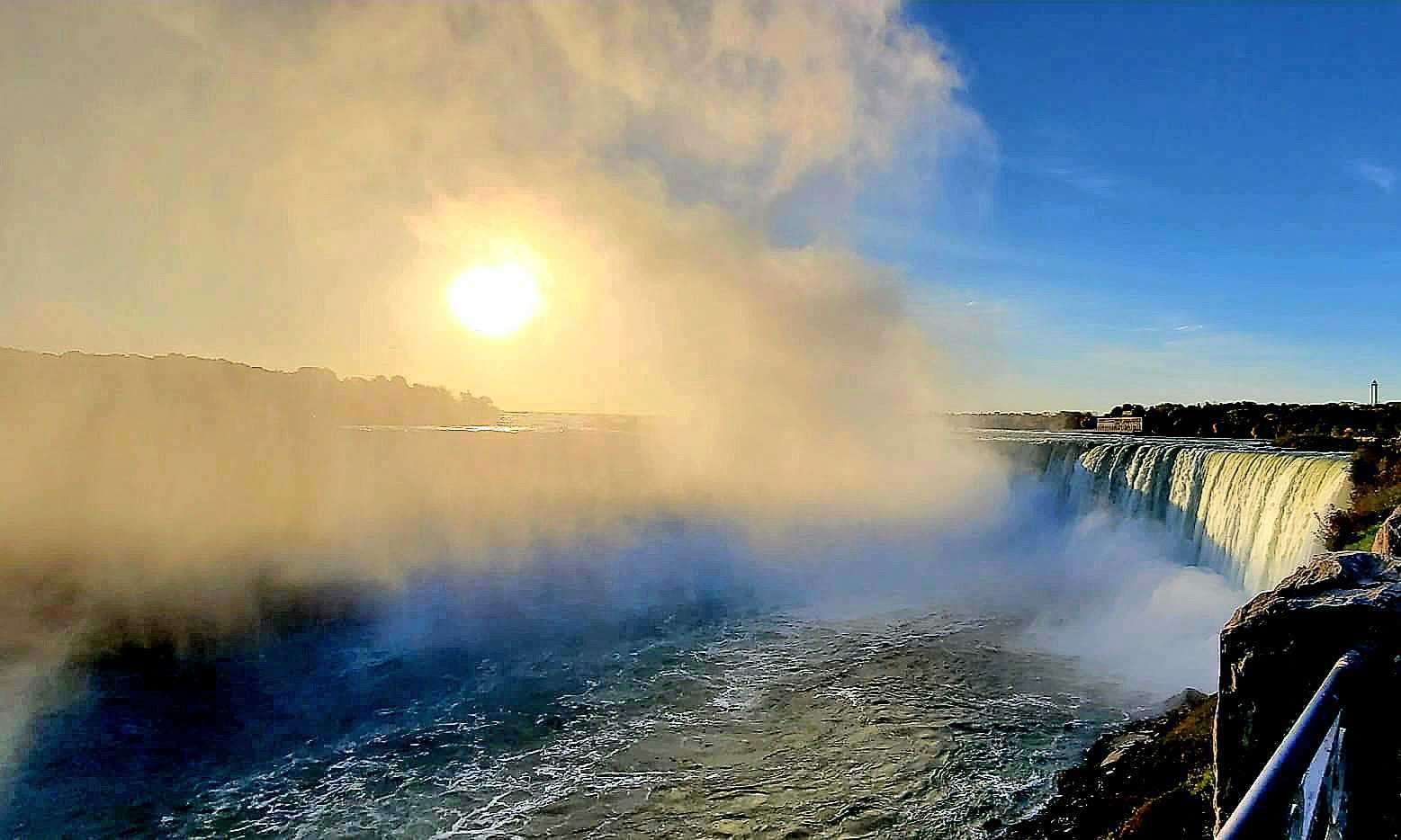State of Emergency in Niagara scared eclipse viewers away
Published April 10, 2024 at 1:02 pm

In the lead-up to the solar eclipse, municipal and regional authorities in Niagara Falls braced themselves for a once-in-a-lifetime event with once-in-a-lifetime attendance numbers. However, when the big day came, the anticipated stampede of attendees was severely diminished when compared to initial projections.
Now that the dust has settled, one question remains: What happened to the Niagara Falls solar eclipse event?
According to Niagara Falls Mayor Jim Diodati, he and his team were told to anticipate the largest public event ever held within city limits. With numbers (no pun intended) eclipsing the previous record of 150,000 attendees, back when Nick Wallenda crossed the falls on a tightrope in 2012.
“We thought, okay, we got to be ready, so we were. We have emergency call centers all over the region, we have police on standby, ambulance, fire, drones, helicopters porta-potties, and we had extra cell towers brought in,” Diodati told insauga.com. “We were ready, and as soon as the region unilaterally put out the notice that we were going into a state of emergency, we were left quite shocked.”
According to Diodati, the Niagara region authorities did not confer with municipal powers in any capacity before hitting the big red button and putting the region into a general state of emergency.
“There had been zero consultation on this, and had there been, we would have expressed our disagreement with going in this direction. “What this did was cause a massive viral damper that, in turn, caused a media storm around ‘what’s the emergency?’ and a public concern surrounding ‘what aren’t they telling us?’” says Diodati.
In the mere days between the state of the emergency announcement and the solar eclipse, countless hotels, Airbnb locations and restaurants in the Niagara Falls region experienced a massive wave of cancellations.
“Who’s going to take their family into an area that’s in a state of emergency? People would assume that would be a little dangerous and that many would be reluctant to do that — and that’s exactly what happened,” says Diodati.
In the months leading up to the eclipse event in Niagara Falls, Diodati was given projections to expect nearly 1 million potential attendees. However, according to Diodati, when the big day came, those in attendance barely squeaked by 200,000.
While these margins were substantially less than what was projected, Diodati remains optimistic that due to the buzz around the state of emergency, the eyes of the world were — and remain — on Niagara Falls.
“I believe that the residual impact is going be long-term returns from the international market, which has been lagging in our recovery post-COVID. I do think that, in the end, the silver lining to the grey cloud will be a lot more people visiting Niagara Falls than would have otherwise,” says Diodati.
As for the relationship between municipal authorities and the Niagara Region, Diodati believes that this incident, if anything, can be used as a lesson for future events held in the area.
“Sometimes you get bad information, bad advice, and that can often at times, lead to bad decisions,” says Diodati. “Having said that, we wouldn’t have had all that extra media, so yes, it killed the crowds for sure and scared people away but it also drew in headlines.”
While another solar eclipse isn’t bound to hit Ontario for many years, Diodati does believe that what has been learned can lead to strengthing the city down the road, as Niagara Falls is no stranger to large-scale events and bombastic turnouts.
“We need to have all hands on deck; we need to have everyone in the room at the same time because then things come out that wouldn’t come out in isolation, as anyone making decisions in a vacuum is bound to make bad calls.”
INsauga's Editorial Standards and Policies








